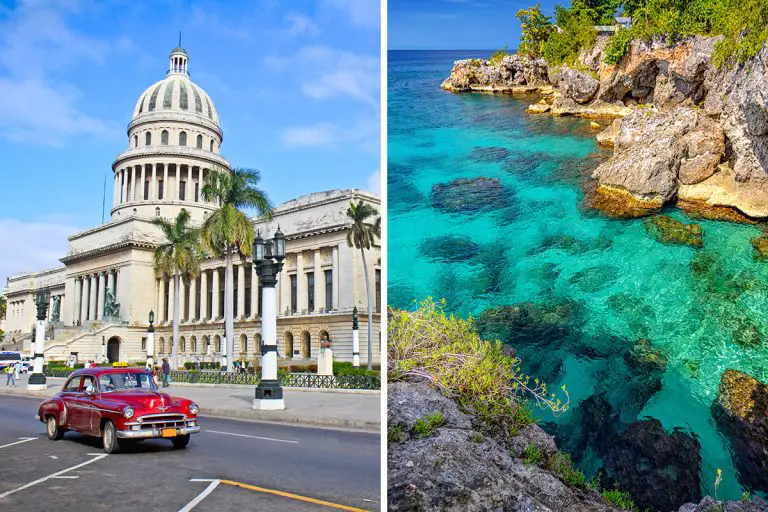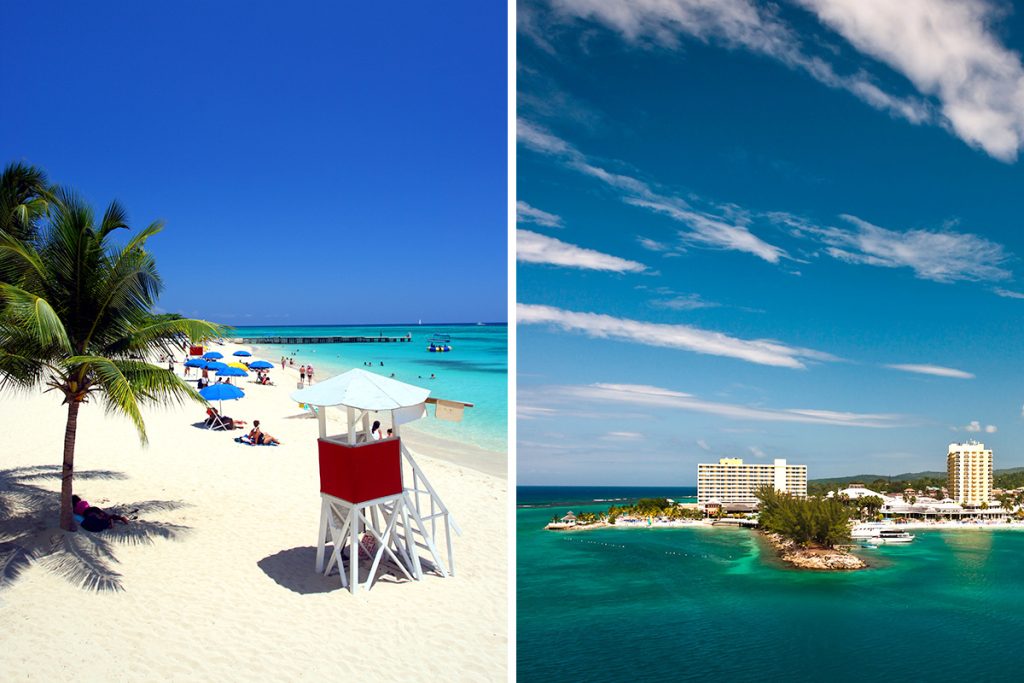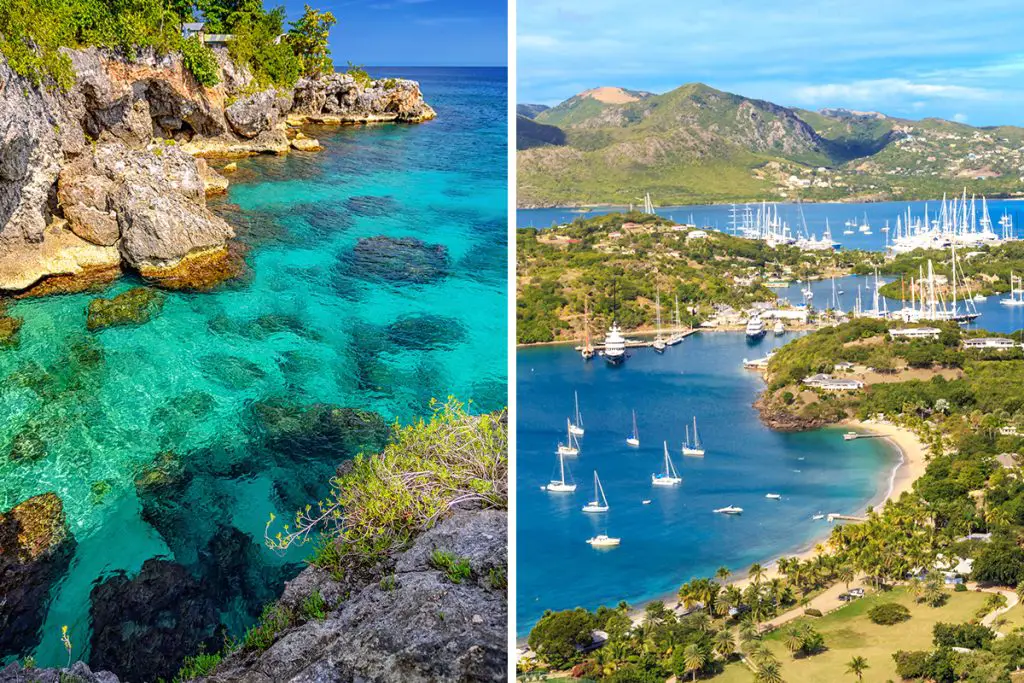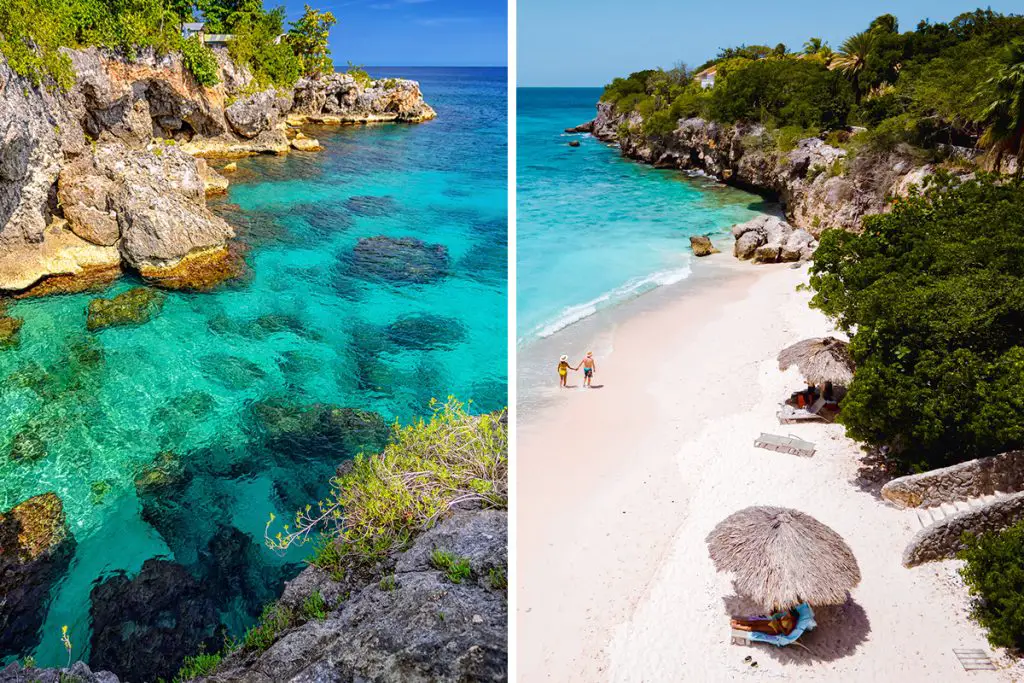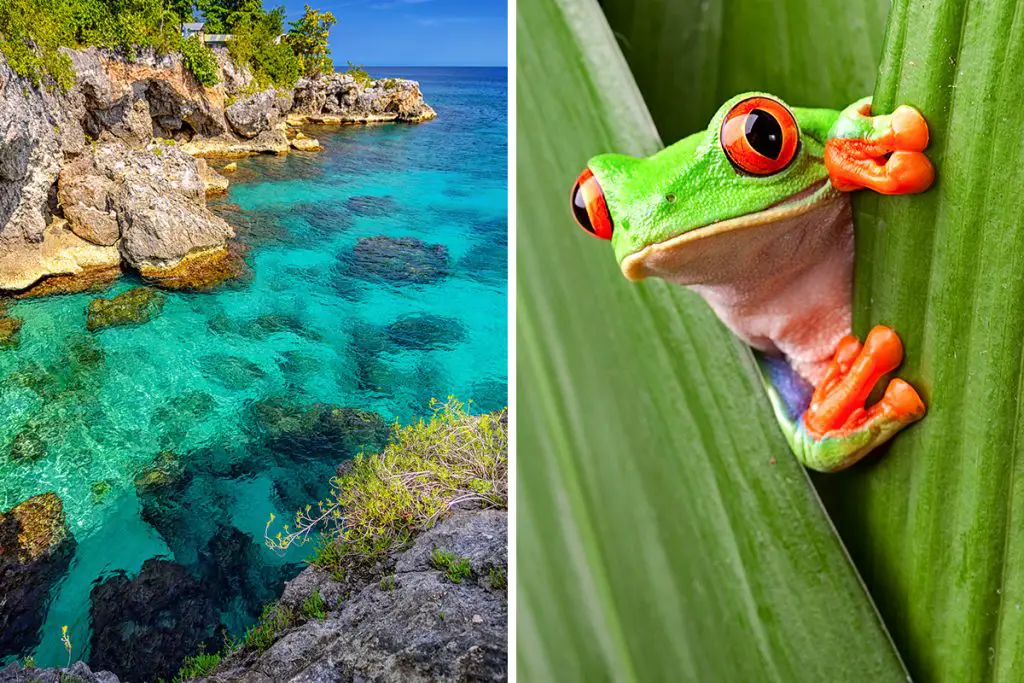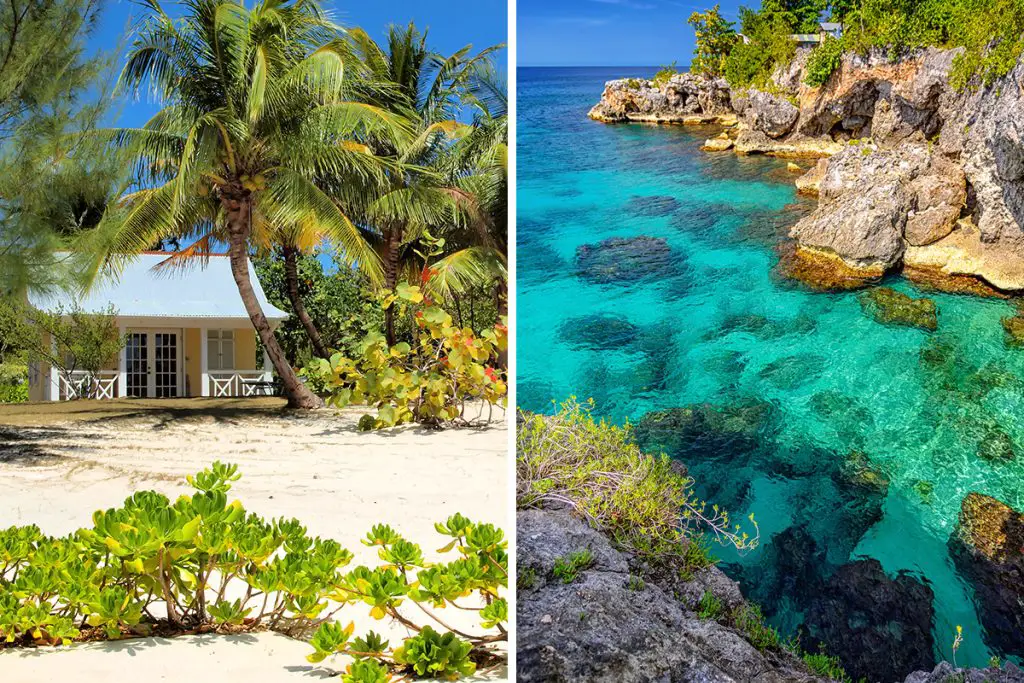Each destination has its own distinctive features and allure. To help you determine which Caribbean paradise is the perfect match for your dream vacation, we will explore various aspects of each island. Ready to dive in? Keep reading and discover which Caribbean gem – Cuba or Jamaica – suits your preferences and desires best.
History & Culture
Delving into the history and culture of Cuba and Jamaica reveals a fascinating tapestry of influences. Both islands have rich pasts, but they also offer unique cultural experiences for travelers.
Cuba’s history is a mix of indigenous, Spanish, and African influences. You’ll see it in the colonial architecture and the traditional music and dance, like the famous salsa. Cuba is also known for its vintage cars, which add a nostalgic charm to the streets.
In contrast, Jamaica’s history is a blend of indigenous, Spanish, British, and African heritages. This melting pot has resulted in a vibrant culture, especially in the arts. Jamaica is the birthplace of reggae music, and its influence can be felt throughout the island.
When it comes to art, Cuba is known for its world-class ballet and visual arts scene. Cuba’s National Ballet is renowned, and many galleries showcase the works of talented local artists.
Jamaica, on the other hand, has a thriving street art scene, with colorful murals adorning the walls of cities like Kingston. Additionally, you’ll find many local crafts, such as woodcarvings and pottery, made by skilled artisans.
Cuba’s revolutionary history is a significant part of its identity. You can learn more about this period through various museums and monuments dedicated to the Cuban Revolution.
Jamaica’s history is also marked by the struggle for independence from British rule. The Maroons, descendants of escaped African slaves, played a crucial role in this fight, and their story is an essential part of Jamaican history.
In summary, both Cuba and Jamaica have unique histories and cultures that offer visitors a chance to immerse themselves in the Caribbean experience. While Cuba is a blend of old-world charm and revolutionary spirit, Jamaica is a vibrant mix of art, music, and the spirit of resilience.
Attractions & Activities
Cuba and Jamaica both offer a wealth of attractions and activities for visitors. Let’s compare what each destination has to offer.
Cuba is famous for its capital city, Havana, where you can explore the historic old town, Havana Vieja, and admire the stunning colonial architecture. Cuba also has numerous well-preserved forts and other historical sites, such as the Castillo de San Pedro de la Roca in Santiago de Cuba.
Jamaica’s most iconic attractions include Dunn’s River Falls, where you can climb the cascading waterfalls, and the Bob Marley Museum, which celebrates the life and legacy of the legendary musician. Another must-see is the Blue Mountains, where you can hike or take a guided tour through the lush landscape.
Outdoor enthusiasts will enjoy Cuba’s diverse natural attractions, like the Viñales Valley, a UNESCO World Heritage Site known for its stunning limestone formations and traditional tobacco farming.
Similarly, Jamaica offers a variety of outdoor activities, such as rafting down the Martha Brae River, zip-lining through the rainforest, or exploring the Green Grotto Caves.
Cuba’s cultural experiences include attending a traditional music or dance performance, like the world-famous Tropicana Show. You can also learn about Cuban cigars by visiting a tobacco plantation or a cigar factory.
In Jamaica, you can immerse yourself in the local culture by attending a traditional drumming or dance performance, or by visiting a Rastafarian village to learn about their unique way of life.
To sum up, both Cuba and Jamaica offer a wide range of attractions and activities to suit any traveler’s interests. Cuba is ideal for history buffs and those seeking a taste of old-world charm, while Jamaica is perfect for music lovers and those looking for exciting outdoor adventures.
Beaches
Beaches are a significant draw for visitors to both Cuba and Jamaica. Each island has its own unique shoreline gems to explore and enjoy.
In Cuba, you’ll find the famous Varadero Beach, stretching for 12 miles (19.3 kilometers) along the island’s northern coast. Its white sand and crystal-clear water make it a popular destination for sunbathing and swimming.
Jamaica’s most famous beach is the Seven Mile Beach in Negril, which spans 7 miles (11.3 kilometers) of golden sand and warm turquoise waters. It’s the perfect spot for relaxation and water sports like snorkeling and scuba diving.
Cuba also offers some lesser-known but equally stunning beaches, like Playa Pilar on Cayo Guillermo. This pristine beach is known for its powdery sand, calm waters, and picturesque surroundings.
Similarly, Jamaica has hidden gems like Treasure Beach, a more secluded and laid-back option on the island’s southern coast. It’s an ideal spot for those seeking a quieter beach experience away from the crowds.
For those interested in water sports, Cuba’s Guardalavaca Beach on the eastern side of the island is a great choice. The coral reefs just off the shore make it an excellent spot for snorkeling and diving.
In Jamaica, Montego Bay’s Doctor’s Cave Beach is another popular destination for water sports enthusiasts, with clear waters and a variety of activities available, such as jet skiing and paddleboarding.
In conclusion, both Cuba and Jamaica boast stunning beaches with unique features. Cuba offers a mix of popular tourist spots and secluded gems, while Jamaica provides a combination of lively beach towns and tranquil retreats. Each destination has something to offer, whether you’re seeking relaxation, water sports, or a bit of both.
Eating, Drinking & Nightlife
Exploring the culinary scene and nightlife is a significant part of any trip to Cuba and Jamaica. Both islands have their own unique flavors and experiences to offer.
Cuban cuisine is a blend of Spanish, African, and Caribbean flavors. You’ll enjoy dishes like ropa vieja (shredded beef in tomato sauce), arroz con pollo (chicken and rice), and the iconic Cuban sandwich.
Jamaican food is famous for its bold flavors and spices. You can try traditional dishes like jerk chicken, ackee and saltfish, and beef patties, all bursting with taste.
When it comes to drinks, Cuba is known for its delicious cocktails like the mojito and daiquiri, featuring Cuban rum as the main ingredient. You can enjoy these drinks in the many bars and cafes found throughout the island.
Jamaica, on the other hand, is famous for its Red Stripe beer and, of course, rum. You can sample different varieties of Jamaican rum at distilleries or bars around the island.
Cuba’s nightlife has a unique charm, with lively music and dance venues like the Casa de la Musica, where you can experience traditional salsa and other Cuban music styles. Jazz clubs and cabaret shows are also popular nighttime attractions.
Jamaican nightlife is diverse and energetic, with lively beach bars, clubs, and live music venues. Reggae and dancehall music dominate the scene, ensuring a memorable night out for all.
In summary, both Cuba and Jamaica offer distinctive culinary experiences and vibrant nightlife options. Cuba’s cuisine and nightlife are rooted in its rich cultural history, while Jamaica’s food and entertainment reflect its energetic spirit and love for music.
Shopping
Shopping can be a fun way to experience the local culture and bring home unique souvenirs from your trip to Cuba or Jamaica. Both destinations offer a variety of shopping options to explore.
In Cuba, you’ll find local markets like Almacenes San José, where artisans sell handmade crafts, artwork, and other unique items. It’s a great place to find authentic Cuban souvenirs and support local artists.
Jamaica’s shopping scene is diverse, with craft markets like the Kingston Craft Market and Montego Bay Craft Market. These bustling markets offer handmade crafts, wood carvings, and colorful textiles to bring home as mementos.
Cuba is also known for its high-quality cigars, which can be purchased at tobacco shops called “Casa del Habano.” You can find these shops throughout the island and even take a tour of a tobacco plantation to learn about the production process.
Jamaica is famous for its Blue Mountain coffee, which can be found in specialty shops and markets. This premium coffee makes an excellent gift for coffee lovers or a tasty souvenir for yourself.
Shopping in Cuba can be a bit more challenging due to limited availability of goods and government restrictions. However, this also means you’ll find unique and locally made items that can’t be found elsewhere.
In contrast, Jamaica offers a wider variety of shopping options, including luxury shopping centers, like the Shoppes at Rose Hall, where you can find international brands and high-end products.
In summary, both Cuba and Jamaica offer memorable shopping experiences, with Cuba focusing on unique, locally made products and Jamaica offering a mix of local crafts and international brands. Your choice will depend on your preferences and what you’re looking to bring home from your trip.
Accommodation
Finding the right accommodation is essential for a comfortable and enjoyable stay in Cuba or Jamaica. Both destinations have a range of options to suit your needs and budget.
Cuba offers a mix of hotels, resorts, and “casa particulares,” which are private homes that rent rooms to tourists. These casas provide an authentic Cuban experience and often include home-cooked meals.
Jamaica’s accommodation options range from all-inclusive resorts to boutique hotels and cozy guesthouses. There’s something for every traveler, whether you’re seeking luxury or a budget-friendly option.
In Cuba, hotels and resorts are typically state-owned and can be found in major cities and popular tourist areas. They provide a variety of amenities but may lack the personalized touch of a casa particular.
Jamaica’s all-inclusive resorts, like those found in Montego Bay and Negril, offer a hassle-free vacation experience. These resorts include meals, drinks, and activities in the price, making it easy to plan your stay.
Budget travelers will find affordable options in both Cuba and Jamaica. Cuba’s casa particulares and Jamaica’s guesthouses offer lower prices and a more intimate experience than larger hotels or resorts.
In conclusion, both Cuba and Jamaica offer a wide range of accommodation options to suit any budget and preference. Cuba’s casas particulares provide a unique cultural experience, while Jamaica’s all-inclusive resorts offer convenience and luxury. Choose the option that best fits your travel style and enjoy your stay.
Family-Friendliness & Children’s Activities
Planning a family vacation means considering the interests of every family member. Both Cuba and Jamaica have a lot to offer in terms of family-friendly activities and entertainment.
Cuba’s family-friendly options include educational experiences, like exploring Havana’s historic sites, such as Old Havana and the Revolution Museum. Children can learn about the country’s history and culture while having fun.
Jamaica has numerous attractions for families, like the popular Mystic Mountain Adventure Park, where you can try zip-lining, bobsledding, and a Sky Explorer ride. It’s an adventure-packed day for kids and parents alike.
For animal lovers, Cuba offers the chance to swim with dolphins at the Dolphinarium in Varadero. This interactive experience allows children to learn about these magnificent creatures up close.
In Jamaica, families can visit the Dolphin Cove in Ocho Rios, where they can swim with dolphins, interact with stingrays, and even walk through a jungle filled with tropical birds and iguanas.
Both Cuba and Jamaica have beautiful beaches perfect for a family day out. In Cuba, try the family-friendly Playa Ancon, with its calm waters and white sand. In Jamaica, enjoy the crystal-clear waters of Doctor’s Cave Beach in Montego Bay.
In conclusion, both Cuba and Jamaica offer a variety of family-friendly activities and experiences. Cuba focuses on educational and cultural experiences, while Jamaica has more adventure-based attractions. Choose the destination that best aligns with your family’s interests for an unforgettable vacation.
Getting There & Getting Around
Traveling to and around Cuba or Jamaica requires some planning, as each destination has unique transportation options and challenges.
To reach Cuba, you can fly into Havana’s José Martí International Airport (HAV). Direct flights are available from several US cities and other international destinations. The flight from Miami to Havana takes about 1 hour and covers 230 miles (370 km).
Jamaica has two major international airports: Norman Manley International Airport (KIN) in Kingston and Sangster International Airport (MBJ) in Montego Bay. Both airports offer direct flights from the US and other countries. For example, a flight from Miami to Montego Bay takes around 1 hour and 40 minutes, covering 525 miles (845 km).
Once in Cuba, getting around can be a bit more challenging due to limited public transportation options. You can rent a car, hire a taxi, or use a shared taxi called “colectivo” for longer distances.
In Jamaica, you can rent a car, use taxis, or take advantage of the public bus system, which serves major cities and tourist areas. For a more unique experience, try a route taxi, which is a shared taxi service that operates along specific routes.
Both Cuba and Jamaica offer organized tours, which can be a convenient way to explore the island without worrying about transportation. These tours often include transportation, guides, and entrance fees to attractions.
To sum up, getting to and around Cuba and Jamaica involves different transportation options. Cuba’s transportation can be a bit more challenging, while Jamaica offers more variety and ease of use. Plan your transportation based on your preferences and the type of experience you’re seeking.
Weather
When choosing a vacation destination, weather plays an important role. Both Cuba and Jamaica have tropical climates, but there are some differences to consider.
Cuba’s weather is generally warm and humid throughout the year. Temperatures average around 75°F (24°C) in January and 82°F (28°C) in July. Cuba has a rainy season from May to October, with September and October being the wettest months.
Jamaica’s climate is similar to Cuba’s, with warm temperatures year-round. In January, average temperatures are about 77°F (25°C), while in July, they reach 82°F (28°C). Jamaica’s rainy season occurs from May to November, with the heaviest rainfall in October.
Both Cuba and Jamaica are prone to hurricanes during the Atlantic hurricane season, which runs from June to November. It’s essential to stay informed about potential storms and plan your trip accordingly.
Cuba’s high season for tourism is from December to April, when the weather is drier and cooler. This is the best time to visit if you want to avoid rain and extreme heat.
Jamaica’s peak travel season is from mid-December to mid-April. During this time, the weather is more pleasant and there is less rainfall, making it a popular time for tourists.
In summary, both Cuba and Jamaica have warm, tropical climates with rainy seasons and potential hurricanes. The best time to visit either destination is during their respective high seasons when the weather is more favorable.
Safety
Safety is a top concern for travelers, and understanding the safety situation in both Cuba and Jamaica is essential for a worry-free vacation.
Cuba is generally considered a safe destination for tourists. Petty crime, such as pickpocketing and bag snatching, can occur in crowded areas, but it’s relatively rare. To protect yourself, keep your belongings secure and stay aware of your surroundings.
Jamaica has a higher crime rate compared to Cuba, especially in urban areas. Petty theft and pickpocketing can be an issue in crowded places. Stay vigilant and take precautions to keep your valuables safe.
In both destinations, it’s important to follow local laws and customs. Being respectful and aware of cultural differences can help ensure a smooth and enjoyable trip.
Cuba has strict regulations on internet access and communication. Be prepared for limited internet availability and follow any guidelines provided by your accommodation or local authorities.
Jamaica has some areas, such as parts of Kingston and Montego Bay, that are considered less safe for tourists. It’s a good idea to research the areas you plan to visit and avoid risky locations.
In conclusion, while safety concerns vary between Cuba and Jamaica, taking precautions and staying informed can help ensure a safe and enjoyable vacation in either destination.
Cost
When planning a vacation, budget is a crucial factor to consider. Comparing the costs of traveling to Cuba and Jamaica can help you make an informed decision.
Cuba is known for being a more budget-friendly destination. Accommodations, food, and transportation tend to be less expensive here. For example, a mid-range meal in Cuba might cost around 10 CUC (10 USD), while in Jamaica, it could be around 15 USD.
Jamaica, on the other hand, has a higher cost of living, which can affect the prices of goods and services. However, there are still budget options available if you’re willing to look for them.
When it comes to attractions and activities, Cuba offers many affordable options. From exploring historical sites to enjoying outdoor activities, you can find plenty to do without breaking the bank.
In Jamaica, some attractions and activities can be more expensive, but you can still find budget-friendly options. Be sure to research and compare prices before making reservations.
Currency exchange rates can also play a role in the overall cost of your trip. Keep an eye on exchange rates between your home currency, the Cuban Peso (CUP), the Cuban Convertible Peso (CUC), and the Jamaican Dollar (JMD) to ensure you get the best value for your money.
In summary, while both Cuba and Jamaica offer a range of options to suit different budgets, Cuba is generally more affordable. Keep your budget in mind when planning your trip to either destination.
Which Is Better – Cuba or Jamaica?
After comparing various aspects of Cuba and Jamaica, it’s clear that each destination offers unique experiences and advantages.
Cuba is the better choice for those interested in history and culture, as well as budget-conscious travelers. Its affordability and rich heritage make it an attractive option for a memorable vacation.
Jamaica, on the other hand, may be more appealing to those seeking stunning beaches and diverse attractions. With its warm climate, beautiful landscapes, and exciting activities, Jamaica is an excellent choice for a fun-filled getaway.
For families, both destinations offer family-friendly activities and accommodations, but the choice will depend on personal preferences and budget constraints.
In terms of getting there and getting around, each destination has its pros and cons. Consider your travel preferences, budget, and the ease of transportation when making your decision.
When it comes to weather, both Cuba and Jamaica have tropical climates, but the best time to visit will vary depending on your preferences for temperature and rainfall.
Safety concerns differ between the two destinations, with Cuba being generally safer. However, with proper precautions and research, both destinations can be enjoyed without worry.
In conclusion, the choice between Cuba and Jamaica depends on your personal preferences, budget, and interests. By considering the various aspects of each destination, you can make an informed decision and plan the vacation that’s perfect for you.

